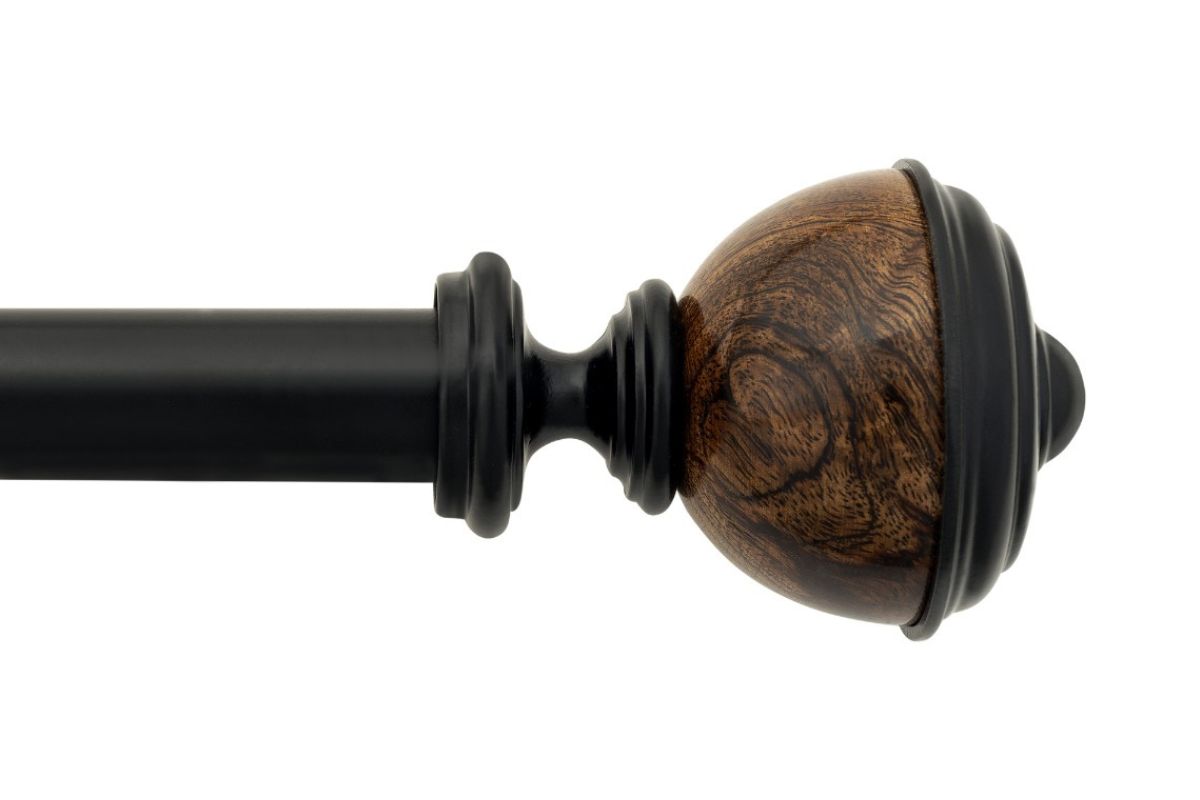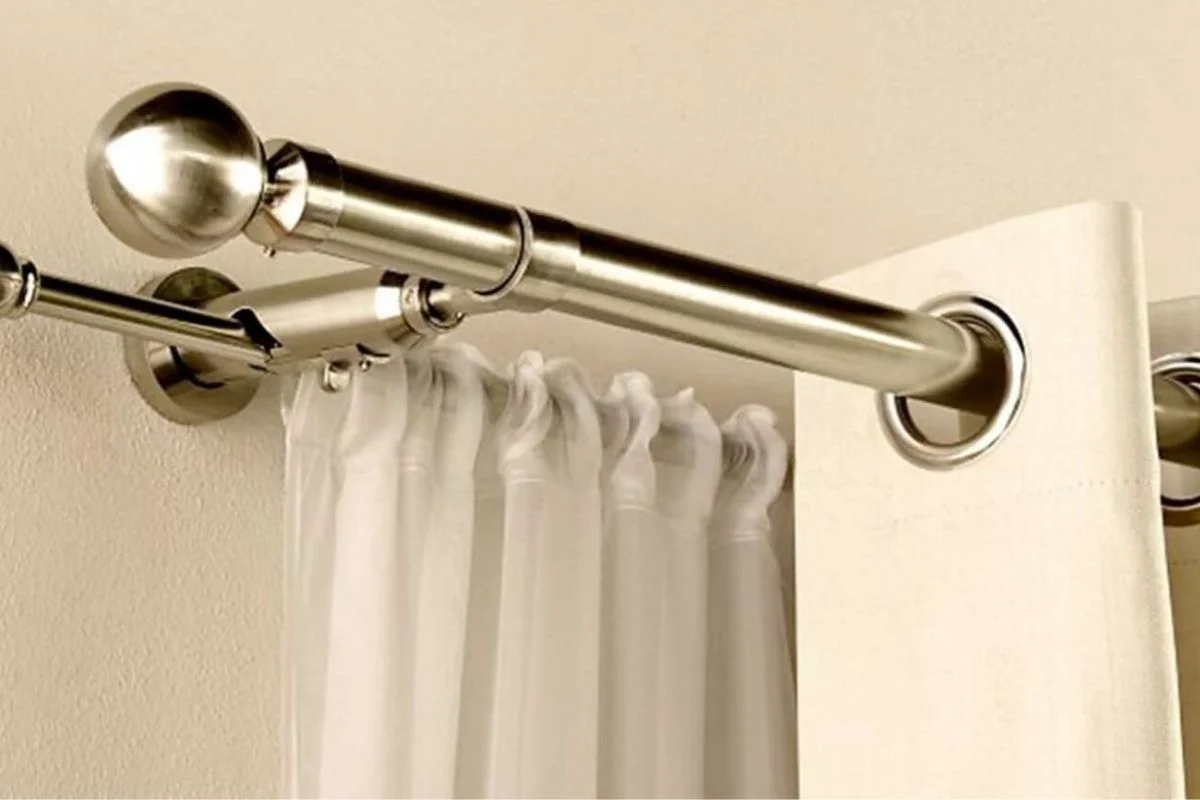Curtain brackets, though often overlooked, play a significant role in both the functionality and aesthetics of window treatments. Beyond their practical purpose of providing support for curtains or draperies, curtain brackets offer a canvas for creativity and style in home decor. In this article, we’ll explore a plethora of creative curtain bracket ideas that can elevate the look and feel of your living spaces. From unconventional materials to unique designs and placement techniques, these ideas will inspire you to think outside the box and transform your windows into stunning focal points. Whether you’re aiming for a modern minimalist look, a rustic farmhouse vibe, or an eclectic bohemian feel, there’s a curtain bracket idea to suit every taste and decor style. Join us as we delve into the world of creative curtain brackets and discover innovative ways to enhance your home decor.
Importance of Curtain Brackets in Window Treatments
Curtain brackets are integral components of window treatments, playing a vital role in both functionality and aesthetics. Here’s why curtain brackets are important in enhancing window treatments:
Support and Stability: Curtain brackets provide essential support for curtain rods, ensuring they remain securely in place above windows. This support is crucial for preventing sagging or drooping of curtains, especially heavier fabrics or longer lengths.
Proper Hanging: Properly installed curtain brackets ensure that curtains hang evenly and neatly, enhancing the overall appearance of window treatments. They help maintain the desired height and alignment of curtains, creating a polished and cohesive look.
Variety of Designs: Curtain brackets come in a wide range of designs, allowing homeowners to customize the look of their window treatments to suit their decor style. Whether it’s sleek and minimalist brackets for modern interiors or ornate and decorative brackets for traditional settings, there are options to match any aesthetic preference.
Support for Different Curtain Styles: Different curtain styles require specific types of brackets for proper installation. For example, traverse rods require brackets that accommodate the cord or wand mechanism for opening and closing curtains, while decorative rods may need brackets that complement their design.
Enhanced Decor: Beyond their functional role, curtain brackets contribute to the overall decor of a room. They can serve as decorative accents, adding visual interest and style to windows. Finials, decorative brackets, and unique materials can elevate the look of curtain brackets, enhancing the overall decor of the space.
Customization and Flexibility: Curtain brackets offer homeowners the opportunity to customize their window treatments to suit their needs and preferences. With adjustable or extendable brackets, curtains can be hung at varying heights or distances from the window, providing flexibility in light control and privacy.
Longevity and Durability: High-quality curtain brackets are built to last, providing reliable support for window treatments over time. By investing in sturdy and durable brackets, homeowners can ensure that their curtains remain securely in place for years to come.
Definition and Function of Curtain Brackets
Curtain brackets are hardware components used in window treatments to provide support and stability for curtain rods. They are typically installed on the wall or window frame and serve as anchors for securing the curtain rod in place. The primary function of curtain brackets is to hold the curtain rod securely above the window, ensuring that curtains or draperies hang evenly and smoothly.
Definition: Curtain brackets are typically L-shaped or U-shaped brackets made from various materials such as metal, wood, or plastic. They feature a flat surface on one side for mounting onto the wall or window frame, and a curved or angled projection on the other side to support the curtain rod.
Function: a. Support: The main function of curtain brackets is to provide support for the curtain rod, preventing it from sagging or drooping under the weight of curtains or draperies. By securely anchoring the rod in place, brackets ensure that curtains hang evenly and neatly across the window.
Installation: Curtain brackets are installed at regular intervals along the length of the curtain rod, typically spaced evenly to distribute the weight of the curtains. They are mounted onto the wall or window frame using screws or other mounting hardware, ensuring a stable and secure attachment.
Adjustment: Some curtain brackets are designed to be adjustable or extendable, allowing for flexibility in curtain hanging height or distance from the window. Adjustable brackets can accommodate varying curtain lengths or window sizes, providing customization options for different window treatments.
Decorative Accent: In addition to their functional role, curtain brackets can also serve as decorative accents in window treatments. They come in a variety of designs, finishes, and decorative elements such as finials or decorative brackets, allowing homeowners to customize the look of their window treatments to suit their decor style.
Types of Curtain Brackets
Curtain brackets come in various types and designs, each serving specific purposes and offering different aesthetic options for window treatments. Here are some common types of curtain brackets:
Standard Curtain Brackets:
- These are the most basic type of curtain brackets, featuring a simple L-shaped design with a flat base for mounting onto the wall or window frame.
- Standard brackets are versatile and suitable for most curtain rod installations, providing sturdy support for a wide range of curtain styles and weights.
Decorative Curtain Brackets:
- Decorative curtain brackets feature ornate designs, intricate details, and decorative elements such as finials, scrolls, or embellishments.
- These brackets add visual interest and elegance to window treatments, serving as decorative accents that complement the overall decor of the room.
Adjustable Curtain Brackets:
- Adjustable curtain brackets are designed to accommodate varying curtain rod lengths or hanging heights.
- These brackets typically feature telescoping or extendable arms that can be adjusted to fit different window sizes or curtain lengths, providing flexibility and customization options.
Double Curtain Brackets:
- Double curtain brackets are designed to support two curtain rods simultaneously, allowing for the layering of curtains or draperies.
- These brackets feature two sets of arms or projections, providing space for hanging both sheer or lightweight curtains and heavier or blackout curtains on separate rods.
Ceiling-Mounted Brackets:
- Ceiling-mounted brackets are installed on the ceiling rather than the wall, allowing curtains to be hung from above the window.
- These brackets are ideal for creating a dramatic effect or maximizing ceiling height, especially in rooms with tall windows or high ceilings.
Inside-Mount Brackets:
- Inside-mount brackets are installed inside the window frame rather than on the wall or ceiling.
- These brackets are suitable for mounting curtain rods within the window recess, providing a streamlined and space-saving solution for window treatments.
Specialty Brackets:
- Specialty brackets are designed for specific window configurations or unique installation requirements.
- Examples include corner brackets for joining curtain rods at a 90-degree angle, bay window brackets for curved or angled windows, and tension-mounted brackets for temporary or rental installations.
Creative Curtain Bracket Ideas
Curtain brackets offer more than just functional support for your window treatments—they can also serve as stylish and eye-catching decorative elements in your home decor. Here are some creative curtain bracket ideas to enhance the look of your windows and add personality to your space:
Unique Materials:
- Experiment with unconventional materials for your curtain brackets, such as reclaimed wood, metal pipes, or decorative resin. These materials can add a rustic, industrial, or eclectic touch to your window treatments.
Custom Finishes:
- Customize the finish of your curtain brackets to match or contrast with your decor style. Consider painting or staining wooden brackets in bold colors or metallic finishes for a modern and luxurious look.
Decorative Details:
- Choose curtain brackets with decorative details such as intricate scrollwork, ornate finials, or embossed patterns. These decorative elements can add elegance and sophistication to your window treatments.
Layered Look:
- Create visual interest by layering curtain brackets with different designs or finishes. Mix and match brackets with varying heights, shapes, or materials to create a unique and dynamic look for your windows.
Statement Pieces:
- Make a statement with oversized or sculptural curtain brackets that double as decorative focal points in your room. Look for brackets with bold shapes, geometric designs, or intricate carvings to add drama and personality to your windows.
Nature-Inspired:
- Bring the outdoors in with curtain brackets inspired by nature. Choose brackets shaped like branches, leaves, or flowers to add a touch of natural beauty to your window treatments.
Vintage Vibes:
- Embrace retro charm with vintage-inspired curtain brackets. Look for brackets with nostalgic designs, such as art deco motifs, mid-century modern shapes, or antique-inspired finishes, to add vintage flair to your windows.
Minimalist Elegance:
- For a clean and contemporary look, opt for minimalist curtain brackets with sleek lines and understated details. Choose brackets in matte black, brushed nickel, or polished chrome finishes for a timeless and sophisticated vibe.
DIY Creations:
- Get creative and make your own curtain brackets using repurposed materials or found objects. Upcycle vintage doorknobs, drawer pulls, or architectural salvage into unique and one-of-a-kind brackets for your windows.
Whimsical Touches:
- Add a touch of whimsy to your window treatments with playful and unexpected curtain bracket designs. Look for brackets shaped like animals, stars, or other whimsical motifs to infuse your space with charm and personality.
Installing Curtain Brackets
Proper installation of curtain brackets is essential to ensure the stability and functionality of your window treatments. Here’s a step-by-step guide to installing curtain brackets:
- Gather Your Materials:
- Curtain brackets
- Curtain rod
- Screws or mounting hardware
- Screwdriver or drill
- Level
Measuring tape
Determine Bracket Placement:
- Use a measuring tape to determine the desired height for your curtain rod above the window. Mark this height on the wall using a pencil.
- Use a level to ensure that the marks are level across the width of the window.
Mark Mounting Holes:
- Position the first bracket at one end of the window, aligning it with the marked height.
- Use a pencil to mark the locations of the mounting holes on the wall through the holes in the bracket.
Drill Pilot Holes:
- Use a drill to create pilot holes at the marked locations on the wall. The size of the pilot holes should be slightly smaller than the screws or mounting hardware you’ll be using.
Install the First Bracket:
Place the bracket over the pilot holes on the wall.
- Insert screws or mounting hardware through the bracket holes and into the pilot holes in the wall.
- Use a screwdriver or drill to tighten the screws securely, ensuring that the bracket is firmly attached to the wall.
Repeat for Additional Brackets:
- If you’re using multiple brackets for extra support, repeat the same process to install the remaining brackets along the length of the window. Ensure that they are evenly spaced and aligned with the first bracket.
Mount the Curtain Rod:
- Once all the brackets are securely installed, place the curtain rod onto the brackets.
- Double-check that the rod is level and adjust the brackets if necessary.
Secure the Rod:
- Depending on the type of curtain rod you’re using, you may need to secure it in place by tightening screws or other fasteners on the brackets.
- Ensure that the rod is securely in place and can support the weight of your curtains or draperies.
Hang Your Curtains:
- Once the curtain rod is securely mounted, hang your curtains or draperies onto the rod according to your desired style and arrangement.
Check for Stability:
- After installation, gently tug on the curtains to ensure that the brackets and rod are securely in place and can support the weight of the curtains without sagging or coming loose.
Maintaining Curtain Brackets
Proper maintenance of curtain brackets is essential to ensure their longevity and optimal performance in supporting your window treatments. Here are some tips for maintaining curtain brackets:
Regular Cleaning:
- Dust and debris can accumulate on curtain brackets over time, affecting their appearance and functionality. Use a soft cloth or duster to regularly clean the brackets and remove any buildup.
- For stubborn dirt or residue, wipe the brackets with a damp cloth and mild detergent, then dry them thoroughly to prevent water spots or streaks.
Inspection for Damage:
- Periodically inspect the curtain brackets for any signs of damage, such as rust, corrosion, or loose screws. Address any issues promptly to prevent further damage and ensure the continued functionality of the brackets.
- Check the brackets for any bends or warping, which can affect their ability to support the curtain rod properly. Straighten any bent sections of the brackets as needed.
Lubrication:
- Apply a small amount of lubricant, such as silicone-based spray or oil, to the moving parts of the curtain brackets, including the hinge or swivel mechanism. This will help keep the brackets operating smoothly and prevent them from becoming stiff or difficult to adjust.
- Be sure to wipe away any excess lubricant to avoid attracting dust and debris, which can cause the brackets to become dirty or sticky over time.
Repair or Replacement:
- If you notice any damaged or malfunctioning parts of the curtain brackets, such as broken hinges or screws, repair or replace them as needed. Many hardware stores carry replacement parts that are compatible with common curtain bracket systems.
- Consider upgrading to higher-quality curtain brackets if you frequently encounter issues with your current brackets, such as bending or sagging under the weight of heavy curtains.
Rust Prevention:
- If your curtain brackets are made of metal, take steps to prevent rust and corrosion. Avoid exposing the brackets to moisture for extended periods, and promptly dry them if they become wet.
- Apply a rust-resistant coating or paint to metal curtain brackets to provide added protection against corrosion, especially in humid or damp environments.
Proper Storage:
- When not in use, store curtain brackets in a dry and clean environment to prevent damage and corrosion. Avoid leaving them exposed to humidity or extreme temperatures, as this can accelerate deterioration.
- Consider disassembling the curtain brackets and storing them in their original packaging or a protective container to prevent scratches or dents during storage.
Conclusion
In conclusion, maintaining curtain brackets is essential for ensuring the longevity and functionality of your window treatments. By following the maintenance tips outlined in this guide, you can keep your curtain brackets in optimal condition, providing reliable support for your curtains or draperies.



